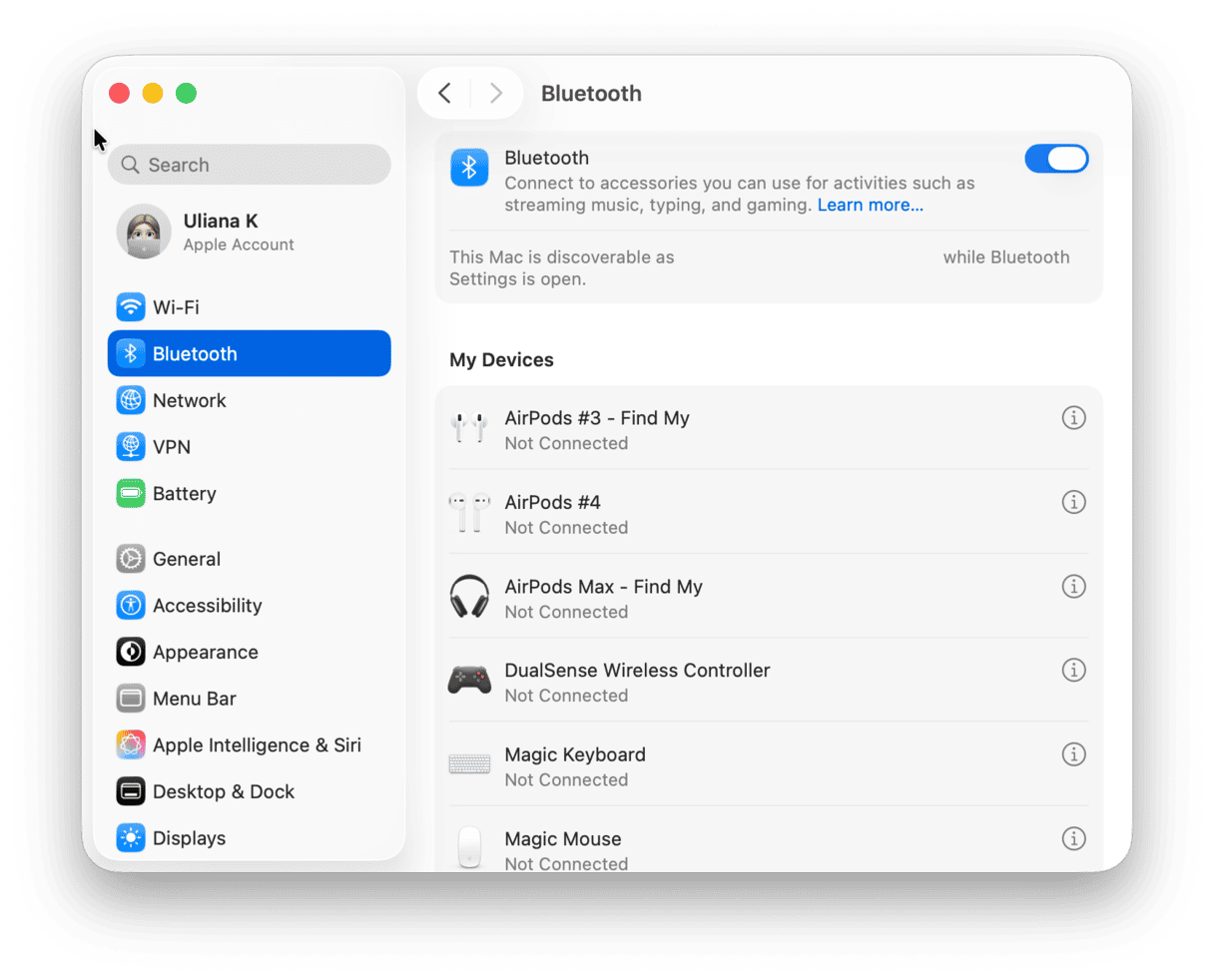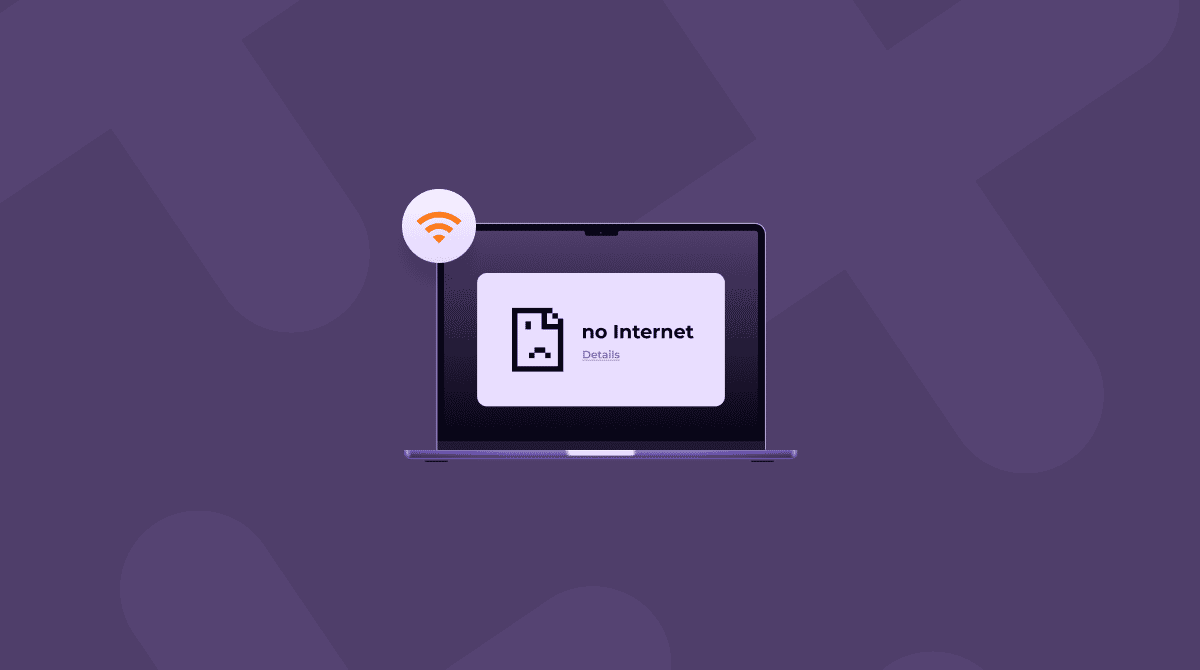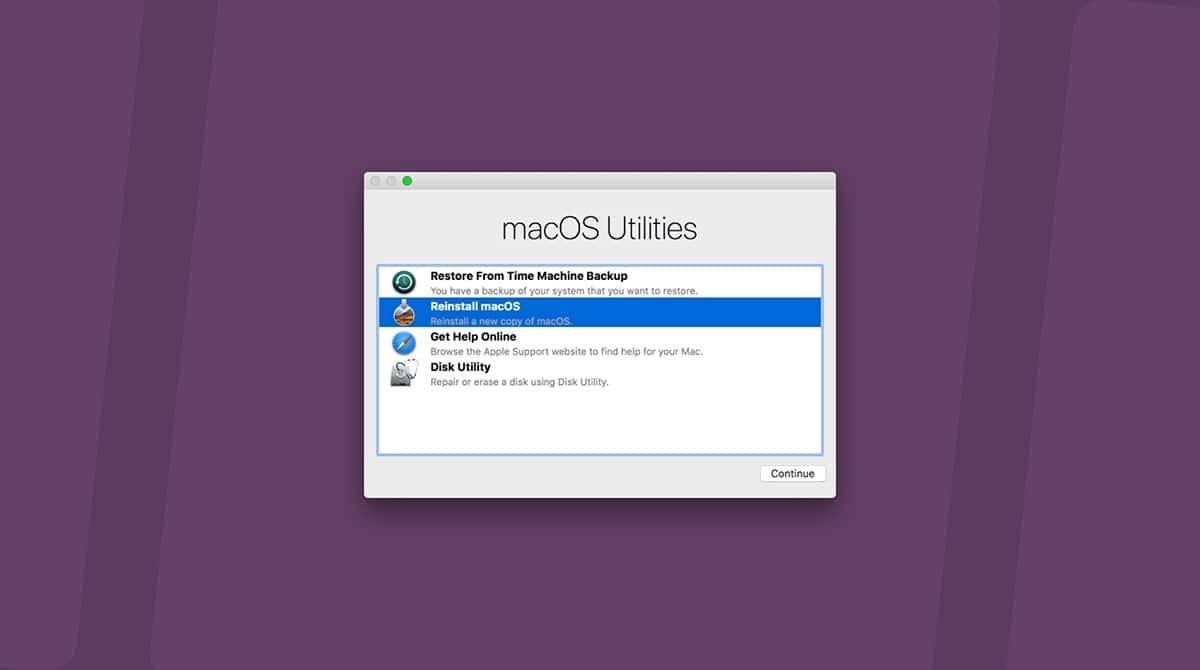So, you are trying to wake your Mac from sleep, and it just won’t. All you see is a black screen on your MacBook Pro, no matter what keys you are pressing. Below, you’ll find a couple of solutions (mostly based on users’ cases) to bring your Mac back to light.
Reasons your Mac screen goes black:
- 3rd party apps that expand the screen
- Recently upgraded operating system
- Corrupted display and energy settings
- Cables not connected
Easy fixes for MacBook black screen
1. Adjust your display’s brightness
You may have accidentally pressed the brightness keys on the keyboard, so your screen dimmed down. Could it be your cat stepping on keys? Use F1 and F2 buttons or Touch Bar to light the black screen on your Mac.
Alternatively, adjust the brightness from Control Center.

2. Check if the power is on
Examine if your charger cable is intact and your Mac is charging. In MagSafe charger cables, is the green light on? To rule out the power issues with other models, check if your Mac produces any noise — from the hard drive or fans. If you still see the black screen on Mac, read on.
3. Disconnect all peripherals
Remove all external devices like printers or external drives. These devices may start their own dialogues, which could interfere with your display settings. It is also a good idea to disconnect Bluetooth devices in System Settings > Bluetooth.


More solutions if your MacBook Pro won’t turn on
1. Force restart your Mac
In most cases, forcing your Mac to restart helps to fix it if your Mac won’t boot. The variance of this issue is your Mac not waking up after sleep. Try to open and close the MacBook lid and press a few keys on the keyboard. It might help, but if it doesn’t, in no way should you panic — first, let’s perform a quick force restart.
- Hold down the Power key for about 6 seconds.
- Wait for your Mac to shut down and press the Power key again.
2. Reset your Mac’s NVRAM settings
NVRAM stands for non-volatile RAM and is basically a functionality that stores in-memory settings for display, speakers, primary startup disk, etc. Everything remotely connected with the boot process (like your MacBook won’t turn on) can be set back to factory settings during the NVRAM reset.
To flush NVRAM settings:
- Shut your Mac down.
- Press the Power key.
- Wait for your Mac to start loading.
- When you hear a startup sound, hold down Cmd + Option + P + R.
- Keep pressing the keys until you hear a second startup sound

Tip: If you own a Mac with Apple silicon, these steps will not work. Instead, NVRAM will reset itself automatically if something is wrong with the memory.

3. Do basic Mac maintenance: disk permissions and Login Items
Did resetting NVRAM do the trick? Now that your display is back to light, you should be able to do a bit of maintenance under the hood of your Mac. In many reported cases, removing old cache files and broken login items helped prevent the “black screen” problem. Oftentimes, the reason for your MacBook black screen problem is broken disk permissions not allowing your Mac to boot normally. A good solution is to use the app called CleanMyMac on your computer and run the Repair Disk Permissions command.
- Get your free CleanMyMac trial.
- Install it and go to Performance from the sidebar.
- Run a scan and click View All Tasks.
- Select Repair Disk Permissions and click Run.

From my experience, it’s the easiest way to optimize hardly-accessible parts of your Mac.
Another possible culprit is the corrupted Login Items. The truth is, some apps like antivirus software would inadvertently sneak into the list of your startup programs; if something goes wrong with the app, it will then affect your Mac’s booting. So, it makes sense that you check your Login Items list and uninstall the unwanted app — both can be done with CleanMyMac’s free version.
4. Zap your Mac’s SMC settings
SMC is a System Management Controller. What it controls is temperature, lights, keyboard, fans, and many other side processes. According to Mac support forums, resetting SMC helps in 90% of the cases when your Mac’s screen goes black. To perform this trick, follow the tips below.
For a MacBook with a non-removable battery:
- Shut your Mac down.
- Connect your Mac to a power outlet.
- While your Mac is still shut, press the Shift + Option + Control and Power keys simultaneously.
- Let go of the keys and boot your Mac again.

For a Desktop Mac (iMac, iMac Pro):
- Unplug the power cable.
- Wait for about 15 seconds.
- Plug your Mac back in and leave it for about 5 seconds.
- Start your Mac in a normal fashion.
For a Mac with Apple silicon:
- Go to Apple Menu.
- Hit Restart...
5. Enter your password — a surprising trick that works
Though it looks counter-intuitive, you may try this solution when your Mac screen goes black. Still, with your Mac’s black screen on startup, enter the password — as you would normally do. Now, press the Return key. Lots of users have reported that this option helped to bring their Macs to life.
A variance of this trick has been found on many Mac forums. Once again, it implies that you press the keys on your Mac in a “blind” mode, hoping that it will light up.
- Press the Power key — just once to summon the restart dialogue.
- Press the S key to send your Mac to sleep.
- Press and hold the Power key to perform a forced shutdown.
- Wait for about 15 secs and start your Mac as usual.
6. Check for any magnets nearby
Inside your MacBook’s lid, there’s a tiny magnet that reacts when the lid is closed. But when there are other magnets nearby that send a wrong signal to your MacBook, telling it to shut down. For example, this happens if you place your computer atop an audio speaker.
_1619688025.png)
Avoid placing your MacBook next to a magnet — it may accidentally shut it down, even if the lid is open.
7. Reinstall the macOS
It is the last-ditch solution to MacBook black screen. The lion’s share of issues we deal with on our computers is software-related. The MacBook display not working is not an exception. So, it makes sense that you update all your apps to their latest versions, including the macOS.
Here is the guide on how to quickly reinstall the macOS:
- For macOS Sierra
- For macOS High Sierra
- For macOS Mojave
- For macOS Catalina
- For macOS Big Sur
- For macOS Monterey
- For macOS Ventura
- For macOS Sonoma
- For macOS Sequoia
If you see a black screen right after updating to macOS Ventura, check this article for more solutions.
If all of the above didn’t work, let go of it and take your Mac over to the service — you’ve done all you could. We hope this article was fun and helpful — feel free to share.









